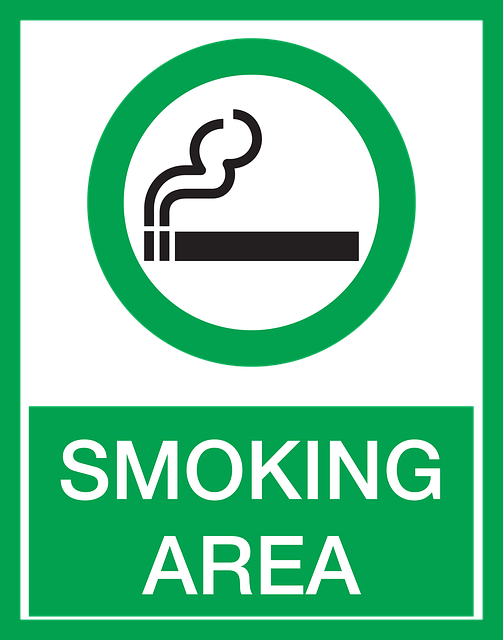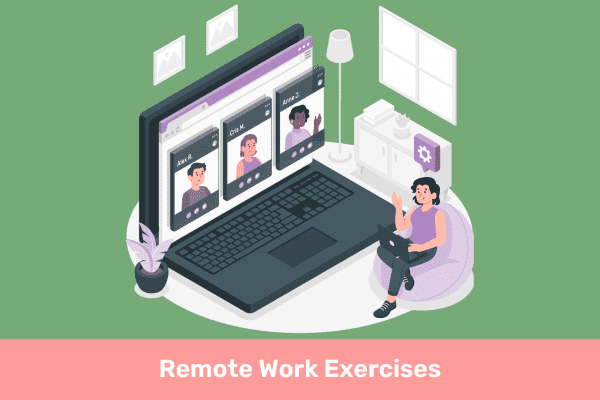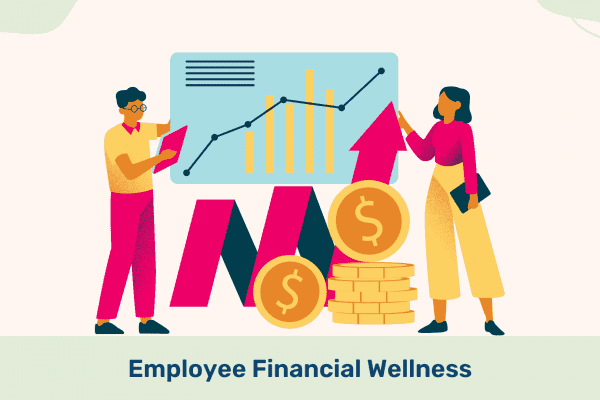Introduction
In today’s fast-paced work environments, the practice of taking smoke breaks at work has become a subject of both discussion and contention. As employees strive to balance their professional responsibilities with personal habits, employers must grapple with the challenge of accommodating these needs while maintaining workplace productivity and ensuring the well-being of their workforce. This article delves into the complex landscape of smoke breaks at work, shedding light on their impact on employee productivity and health.
Some Statistics on Smoke Breaks
Employee productivity is a cornerstone of any successful organization. In the United States, the average worker spends over 2,000 hours a year on the job, making the workplace a significant part of their daily lives. A crucial consideration for employers is how employee behaviors, such as taking smoke breaks, can affect their overall output.
Research indicates that employees who smoke often take multiple smoke breaks throughout the workday, with each break typically lasting between 5 to 15 minutes. Over time, these breaks can add up, potentially leading to a notable reduction in productive working hours.
According to studies conducted by the National Institute on Drug Abuse, smokers in the workplace are absent from work approximately 50% more often than non-smokers. This absenteeism, coupled with the time spent on smoke breaks, can significantly impact productivity.
Furthermore, it’s not just the duration of the breaks that matters; it’s also the potential disruption they cause to workflow. When employees step away from their tasks, colleagues may need to cover for them, leading to disruptions that ripple through the organization.
Beyond productivity concerns, the health implications of smoke breaks are equally significant. Smoking is a well-documented health risk, with the Centers for Disease Control and Prevention (CDC) reporting that it is the leading cause of preventable deaths worldwide.
Employees who smoke are not only at a higher risk of chronic illnesses such as heart disease, lung cancer, and respiratory conditions but also incur higher healthcare costs, which can impact both individuals and employers alike.
Moreover, non-smoking employees may be exposed to secondhand smoke during these breaks, posing potential health risks and creating an environment where the needs of one group of employees may conflict with the well-being of others.
In the following sections of this article, we will explore the pros and cons of smoke breaks at work in greater depth, examining strategies that employers can implement to address these challenges effectively.
What are Smoke Breaks at Work?
Smoke breaks at work refer to short, intermittent periods during the workday when employees who smoke take time away from their job duties to smoke tobacco products, typically cigarettes or electronic cigarettes. These breaks are often characterized by employees leaving their workstations or offices to go to designated smoking areas, where they can smoke.
Smoke breaks have been a common practice in many workplaces for decades, although their prevalence and policies surrounding them can vary widely from one organization to another. During a smoke break, employees step outside or to designated smoking areas to smoke, socialize with colleagues who also smoke, and briefly disengage from their work responsibilities.
The duration and frequency of smoke breaks can vary. Some employees may take multiple short breaks throughout the day, while others might take longer breaks less frequently. The exact policies governing smoke breaks, including their frequency and duration, are typically determined by company policies or workplace culture.
It’s important to note that smoke breaks are specific to employees who smoke tobacco products. Non-smoking employees do not typically take these breaks, and this distinction can sometimes lead to discussions about fairness and equity in the workplace. Employers often aim to strike a balance between accommodating the needs of employees who smoke while maintaining productivity and fairness for all employees. In some cases, employers may implement policies that provide all employees with equitable break options, whether they smoke or not.
Why are Smoke Breaks Allowed at Work?
Smoke breaks are allowed in many workplaces for several reasons, although the policies and practices surrounding them can vary widely. Here are some of the common reasons why employers allow smoke breaks:
Stress Reduction: Smoking is often used as a coping mechanism to deal with stress. Allowing employees to take smoke breaks can provide them with a brief respite from their work responsibilities, allowing them to relax and manage stress effectively.
Learn more: Top 5 Ways To Eliminate Stress In The Workplace
Social Interaction: Smoke breaks often provide opportunities for employees to socialize with colleagues who also smoke. These interactions can foster a sense of camaraderie, build relationships among coworkers, and improve teamwork.
Legal Considerations: In some jurisdictions, labor laws or workplace regulations may require employers to provide reasonable break periods for employees. Allowing smoke breaks can help employers comply with these legal requirements.
Tradition and Workplace Culture: In some industries or workplaces, smoke breaks have become a longstanding tradition or part of the workplace culture. Employers may choose to continue allowing them to maintain consistency and avoid potential conflicts.
However, it’s important to note that while smoke breaks are allowed in many workplaces, there are also limitations and considerations. Employers often have policies in place to manage the frequency and duration of smoke breaks to ensure they do not unduly disrupt productivity.
Additionally, employers are increasingly recognizing the importance of providing equitable break options for all employees, whether they smoke or not, to promote fairness in the workplace. As a result, some workplaces are shifting towards more inclusive break policies that accommodate the diverse needs of their employees.
How many Smoke Breaks are allowed at Work?
The number of smoke breaks allowed at work varies from one workplace to another and is typically determined by company policies or collective bargaining agreements if applicable. There is no universally established standard for the number of smoke breaks an employee is entitled to during a workday. Instead, it often depends on the employer’s discretion, workplace culture, and local regulations.
In many workplaces, employers aim to strike a balance between accommodating the needs of employees who smoke and maintaining productivity for the entire workforce. As a result, they may implement policies that specify the frequency and duration of smoke breaks. Some common approaches include:
- Two or Three Breaks: Some employers allow employees who smoke to take two or three designated smoke breaks during an eight-hour workday. These breaks are often limited to a specific duration, such as 10 or 15 minutes each.
- Lunch and Regular Breaks: In some workplaces, employees are encouraged to use their regular breaks or lunch breaks to smoke. This approach may mean that dedicated smoke breaks are not provided beyond the standard break times.
- Flexible Break Policies: Other employers adopt more flexible break policies that allow employees, whether they smoke or not, to take short breaks as needed within reason. This approach is often intended to provide equitable break options for all employees.
It’s essential to refer to your workplace’s specific policies and guidelines to determine how many smoke breaks are allowed. If you have questions or concerns about smoke break policies in your workplace, you should discuss them with your employer, HR department, or a designated representative to ensure a clear understanding of the rules and expectations. Additionally, local labor laws or regulations may influence workplace policies related to breaks, so it’s important to consider these as well.
Negative Effects of Smoke Breaks on Employees and Employers
Effects of Smoke Breaks on Employees:
- Health Risks: The most significant negative impact of smoke breaks on employees is the potential harm to their health. Smoking is a known risk factor for various serious health conditions, including lung cancer, heart disease, respiratory illnesses, and more. Employees who smoke are at a higher risk of developing these health problems, leading to potential long-term health consequences.
- Financial Strain: Smoking is an expensive habit, and employees who smoke can face a significant financial burden due to the cost of cigarettes. This financial strain can impact their overall well-being, potentially leading to stress and reduced job satisfaction.
- Stigmatization: In workplaces where smoking is not prevalent or encouraged, employees who smoke may face stigmatization or social isolation from their non-smoking colleagues. This can create a sense of exclusion and negatively affect their workplace relationships and morale.
- Reduced Break Equity: Smoke breaks can sometimes lead to a perception of unfairness among non-smoking employees who do not take similar breaks. This perceived inequity can lead to workplace resentment and tension among coworkers.
Effects of Smoke Breaks on Employers:
- Reduced Productivity: One of the most significant concerns for employers is the potential impact of smoke breaks on productivity. Employees who take frequent or extended smoke breaks can disrupt workflow, leading to decreased productivity and inefficiencies in the workplace.
- Increased Absenteeism: Studies have shown that smokers tend to have higher rates of absenteeism compared to non-smokers due to smoking-related health issues. This can lead to increased workload for other employees and additional costs for employers.
- Healthcare Costs: Employers often provide health insurance to their employees, and smoking-related illnesses can result in higher healthcare costs. Smoking-related health problems can lead to more frequent doctor visits, hospitalizations, and prescription drug expenses, which can strain an employer’s healthcare budget.
- Safety Concerns: In some workplaces, smoking may pose safety risks. For example, in environments with flammable materials or in close proximity to equipment, smoking can be a fire hazard. Employers need to consider and mitigate these safety risks associated with smoking.
- Workplace Disruption: Smoke breaks can disrupt the workplace in various ways. They can lead to a loss of focus among employees, as well as interruptions to meetings and other work-related activities. This disruption can hinder the smooth operation of the business.
- Legal and Ethical Obligations: Employers have legal and ethical obligations to provide a safe and healthy workplace for all employees. Allowing smoke breaks without proper regulation may lead to potential legal liabilities if non-smoking employees are exposed to secondhand smoke or if workplace smoking policies do not comply with local regulations.
How to handle Smoke Breaks at Work?
Handling smoke breaks at work can be a delicate task, as it requires balancing the needs and preferences of employees who smoke with the productivity and fairness expectations of the workplace. Here are some steps to effectively manage smoke breaks at work:
Establish Clear Policies:

- Develop comprehensive smoke break policies that clearly outline the rules and expectations. Specify the number of allowed smoke breaks, their duration, and any designated smoking areas.
- Ensure these policies are written in an easily accessible format
- Communicate those policies to all employees, ideally during the onboarding process and through regular reminders.
Limit Frequency and Duration:
- Specify the number of smoke breaks allowed per day and their maximum duration. For example, you might allow two 10-minute breaks during an 8-hour workday.
- Set clear boundaries to prevent excessive time away from work, which can impact productivity.
Include Smoke Breaks in Break Schedules:

- Integrate smoke breaks into the overall break schedule. This can help coordinate breaks to minimize disruption during critical work periods.
- Ensure supervisors and managers are aware of the schedule and encourage employees to adhere to it.
Designated Smoking Areas:

- Create designated smoking areas that are situated away from workspaces and well-ventilated to minimize secondhand smoke exposure.
- Clearly mark and communicate the location of these areas to employees to maintain a clean and safe work environment.
Promote Health and Wellness:

- Encourage employees to consider alternatives to smoking that promote health and wellness. Offer suggestions like short walks, stretching exercises, or deep breathing techniques.
- Provide resources or workshops on stress management, healthy living, and smoking cessation to support employees’ well-being.
Inclusive Break Policies:
- Consider implementing more inclusive break policies that apply to all employees, regardless of smoking habits. This promotes a sense of fairness and equality.
- Encourage all employees to take short, rejuvenating breaks to improve focus and well-being.
Provide Smoking Cessation Resources:

- Offer smoking cessation resources, such as access to counseling, nicotine replacement therapy, or smoking cessation programs. These resources can help employees who want to quit smoking.
- Maintain confidentiality and provide a supportive environment for those seeking assistance.
Address Concerns Fairly:
- Be prepared to address concerns or disputes related to smoking breaks fairly and consistently. Investigate any reported violations of smoke break policies.
- Encourage open communication and a safe platform for employees to voice concerns.
Monitor and Adjust Policies:
- Regularly monitor how smoke break policies are functioning within your workplace. Gather feedback from employees and supervisors to identify areas for improvement.
- Be willing to adjust policies as needed to strike the right balance between employee needs and workplace productivity.
Comply with Local Regulations:

- Stay informed about local and national regulations related to smoking in the workplace. Ensure your policies align with these legal requirements to avoid legal complications.
- Conduct periodic reviews to ensure compliance as regulations may change over time.
Educate Supervisors and Managers:

- Provide training to supervisors and managers on how to enforce smoke break policies fairly and consistently. Equip them with conflict resolution skills to address concerns effectively.
- Ensure that supervisors understand the importance of treating all employees with respect and fairness.
Promote Alternatives to Smoking:

- Foster a workplace culture that promotes healthy alternatives to smoking, such as regular exercise, stress management programs, and access to nutritious snacks.
- Organize wellness initiatives and programs that encourage employees to adopt healthier habits.
Conclusion
Managing smoking breaks at work requires a thoughtful approach that balances the needs of employees who smoke with the productivity and well-being of the entire workforce. Establishing clear policies, promoting health and wellness, and providing resources for smoking cessation are essential steps in achieving this balance. Employers can create a healthier, more equitable, and productive work environment. They can promote a workplace culture that prioritizes the overall well-being of employees and offers support for those looking to quit smoking.
Woliba: Your Partner in Employee Well-being
At Woliba, we understand the importance of employee health and well-being. Our platform is designed to support employees in their wellbeing journey. Our platform offers a wide range of resources, including exercise routines, meditation and yoga videos, and educational articles, to help individuals make positive lifestyle changes.
Quit smoking, improve your well-being, and enhance your overall quality of life with Woliba. Take the first step towards a healthier, smoke-free future today. Contact us now!





